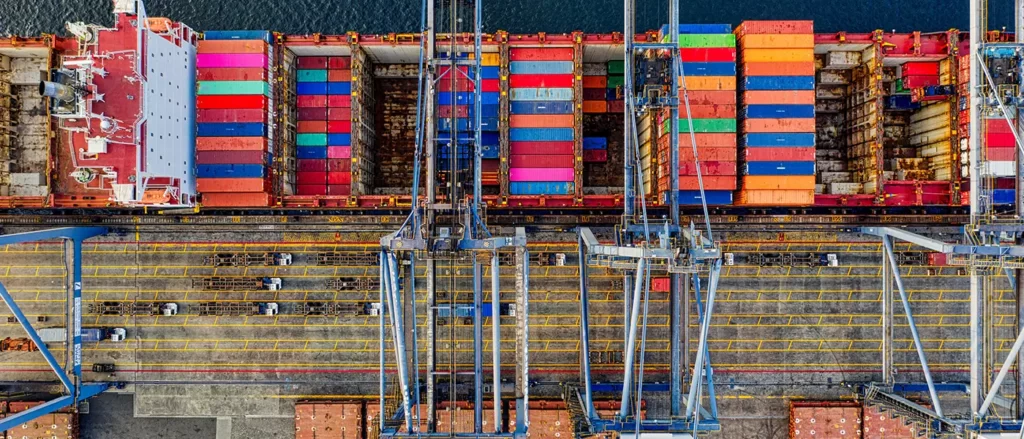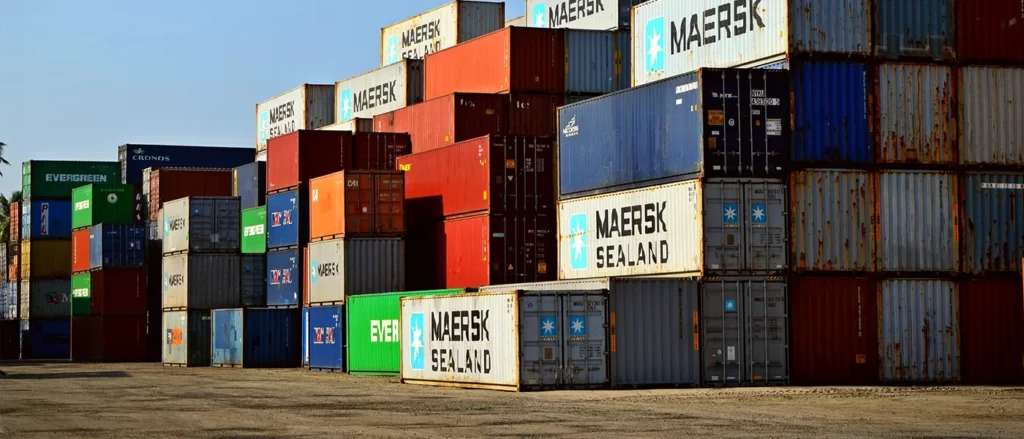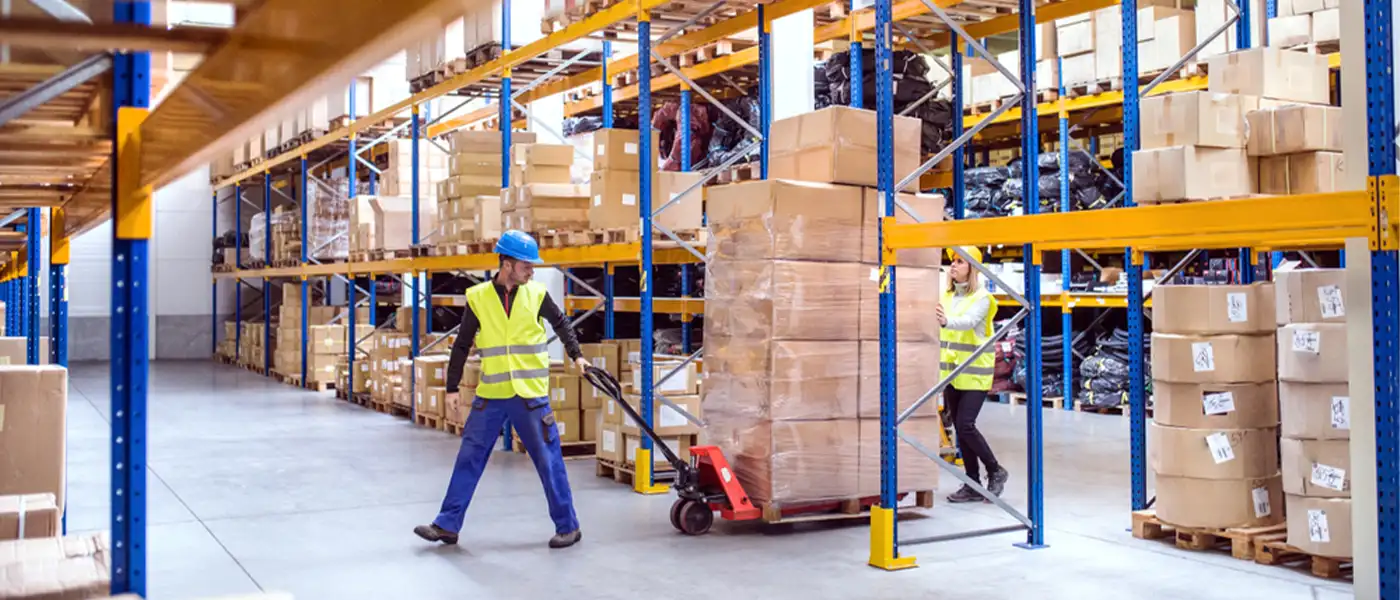Introduction to Freight Shipping
Freight shipping delivers merchandise to a new site via roadway, air, railroad, or sea. The phrase “freight” refers to items transported in bulk by train, lorry, ship, or plane. Freight transportation is critical to e-commerce enterprises, and many rely on this service to carry their items and conduct their business.
What is Freight?
The articles or commodities transported are referred to as freight. The phrase refers to the practical movement of items by any mode of transportation, including land, air, and sea. In general, freight is the bulk movement of products. It is usually separated into two categories: airborne freight and freight deliveries.
Freight shipments are typically split into many categories before being transported, based on the type of commodities being shipped, the volume of the package, and the length of time businesses will transport the products. Some typical categories are expedited, home goods, container, and freight deliveries.
Other classifications include Less than truckload (LTL) and Full truckload (FTL). Air freight, referred to as freight rather than express, is typically dispatched significantly faster than freight cargo. Shipment can be handled by either the corporation that owns the goods or a third party known as a freight forwarder.
What is Shipping?
The transportation of products is known as shipping. Commercial and non-commercial shipping are both viable. It can also be varied sizes of shipments, not simply bulk shipments. Shipping today includes different modes of transportation, not merely vessels. It refers to the delivery of products in bulk from one point to another, whether by ship, air, or other means.
Shipping is commonly to mail personal things or deliver consumer goods to clients. The term “shipping” can also refer to the packages that items are transported in, as in “shipping containers.” These cargo containers are available in a variety of shapes and sizes.
Door-to-door shipping services are when a shipping company includes all shipping, handling, import, and customs duties in its fee and handles each step along the way. When a shipping firm offers door-to-door shipping services, it covers all shipment, processing, import, and customs procedures and the associated cost at every step of the transit.
What is Freight Shipping?
Transporting large shipments of merchandise by plane, overland, or sea, nationally or globally, is known as freight shipping. The commodities are loaded into palettes or massive, heavy vessels before being transferred through one or more modes of transportation.
How Does Freight Shipping Work?
- Gathering shipment information
It is necessary to acquire all the essential information regarding the package during the initial stage of the shipping process: dimensions, size, weight, number, and product category all influence how your freight is shipped.
- Select the best shipping method
After you’ve considered all of the aspects of your consignment, you can select the best mode of transport, such as overland, air, or sea. If the shipment goes outside the country, you must pick between air and ocean transport or a mixture.
- Shipment packing
After determining the best method to ship your product, the next step is to box it properly. It is critical to pack the things precisely into various types of packaging, such as crates, palettes, and so on. This ensures that the order is not damaged and remains intact during transit.
The bulk of freight providers prefer pallets due to the convenience. The first step is to enclose and wrap the packaged products before strengthening the boxes with metal or solid plastic strapping. Depending on the shipping materials, several packaging methods such as packages, sheets, bundles, crates, and so on are employed.
- Label Your Package
Labeling each item in your cargo is critical to minimize confusion during shipping. For all types of packaging, labeling will be conducted at every corner. It not only helps direct goods to the correct location but also helps eliminate any transitional delays.
- Compile the Bill of Lading
The bill of lading is a legally binding agreement between the shipper and the carrier. The bill of lading contains:
- All the information about the products being sent
- The kind of delivery
- The shipper and receiver’s contact information
You can obtain the bill of lading in all office supply stores. This bill must be appropriately completed and signed on both sides.
- Selecting a freight transportation service
With so many variables to consider when transporting products, working with an experienced and dependable freight delivery service provider is critical. Such firms will assist you with the appropriate shipment method, the reasonable price, preparing the documentation, and staying in touch with you during the shipping procedure. Companies will handle the process and transfer whether it is within the region, within the nation, or outside of the country.

What Classifies a Freight Shipment?
Freight is any item more significant than 30 inches x 30 inches x 30 inches or weighing more than 150 pounds. Shipments under these sizes are often less expensive to transport via parcel.
Freight delivery cargo might be palletized or floor-loaded onto a truck. Floor-loaded vehicles must be unloaded manually, whereas palletized cargo can be readily loaded and unloaded with a dock or forklift.
Advantages of Shipping Freight
Freight transportation is critical for transporting items to their destination on schedule, safely, and affordably. There are a lot of advantages to shipping via land, sea, or air:
Top carriers: When transporting critical cargo, you want to assure that your goods arrive securely and on time. E-commerce businesses must pattern with online freight service companies and reputable contract carriers to achieve this.
Reduce shipping costs: Companies may not have the time to investigate carriers, obtain quotations, and discover the cheapest pricing for their freight. A thrid party logistics provider can streamline the search and offer you access to some of the best shipping carriers at affordable rates.
Freight on time: When dealing with time-sensitive freight, you may need to deliver it to your clients within a specific delivery window. You can choose the option that best suits your schedule from several freight shipping service levels.
What Are the Different Freight Shipping Methods?
Full truckload (FTL): A whole container is accessible for inventory transportation. Full truckload deliveries can be transported by road or rail. Most FTL containers have a capacity of 24 to 26 pallets. FTL deliveries travel directly from the pickup place to the destinations.
Less-than-truckload (LTL) freight shipping: LTR refers to small amounts of freight. Parcel carriers and full truckload carriers are substitutes for LTL carriers. Parcel carriers typically handle tiny parcels and freight that weigh less than 150 lbs. Full truckload carriers transport freight loaded onto semi-trailers. Semi-trailers are generally from 26 and 53 feet long and require a significant volume of cargo to be affordable.
Partial truckload (PTL): A partial truckload (PTL) delivery consists of 6 to 12 pallets. Once the merchandise is placed onto the vehicle for PTL shipments, the likelihood of the inventory being switched to a different vehicle throughout the route is low.
Intermodal: Intermodal shipping occurs when commodities must be transported by train and truck. In addition to those two cargo choices, intermodal shipping can include ships for a smoother and rapid delivery process.
Expedited: Expedited freight is utilized for time-sensitive items and is frequently delivered by truck and air. Expedited freight shipment is the most costly of all freight delivery options.
Freight Shipping Transportation Types
Several transportation kinds are utilized with freight shipment, as there are multiple shipping techniques. Here are some of the widely used freight shipping equipment:
- Flatbed: Flatbeds transport heavy, enormous, or irregularly shaped freight. A flatbed is suitable for machinery and lumber and is not advised for sensitive cargo.
- Temperature Control: A temperature-controlled transportation system is appropriate for commodities sensitive to climatic variations. This refrigerated delivery method is ideal for consumable or climate-sensitive items such as food and medications.
- Dry Van: The dry van is the most common freight transportation. This vehicle can pull up to 15,000 pounds and is 48 to 53 feet long. As the title suggests, dry vans are ideal for transporting dry goods.
- Factors That Determine Freight Shipping Rates
Shippers frequently prioritize cost, and numerous elements might influence freight shipping costs. These are some examples:
1. Freight type
The freight you need to transfer influences the kind of equipment required to haul it, influencing the rate. Dry vans are the least expensive mode of transportation, followed by reefer trucks and flatbeds. Heavy-haul cargo and hazardous materials are both more costly than regular freight.
2. Freight weight
Your rate is also determined by the size and volume of the goods. Carriers typically charge primarily on whichever is greater: the rate by elevation, thickness, and breadth or the rate by raw weight.

3. Freight density
You’ll have to pay more if your product is lightweight but occupies much space. Freight density is especially true for LTL (less-than-truckload) goods. LTL cargoes are charged differently depending on the freight class. Less dense objects are much more expensive to carry than heavier items under this method.
4. Shipment method
The mode of shipment, whether truck, LTL, or partial truckload, helps define a standard rate for your freight costs. Air expedited delivery is the most costly, whereas intermodal deliveries are frequently the least expensive.
5. Supply and demand
The availability of vehicles for your load influences the cost of shipping—shippers who are astute hunt for well-used shipping routes with considerable competition for goods. Lower pricing for shippers results from more carrier competitiveness.
6. Distance
Freight shipping becomes more expensive as the source and destination are further apart. Longer-distance excursions frequently yield the best expense rates for freight shipment because the personnel and transportation expenditures are spread out across more miles for that operation. However, the total cost of moving freight over more significant distances is almost always greater since it takes more time and uses fuel to travel farther.
7. Destination type
Simple delivery locations, such as distribution sites or transportation hubs, are much less inexpensive than inner-city or even more specialized destinations. The more readily and swiftly a driver can enter and exit the drop-off spot, the less costly the shipping transportation becomes.
8. Special handling
Temperature-controlled freight or hazardous cargo requiring specific equipment or licensing will involve higher prices than regular dry products. If your shipment requires special handling, the shipping business will account for the extra knowledge and skills needed when determining your final expenses.
How to Prepare a Freight Shipment
Prepare appropriate-sized palettes – Pallets are also used to concentrate shipments and facilitate moving. A high-quality pallet should be wood or plastic and range between 20 and 70 lbs. When selecting a pallet, ensure that it is strong enough to handle the weight and spacious enough to prevent overhanging, which can cause significant damage.
- Stack with caution: Stack your goods in columns to construct squares or rectangles. Because you wouldn’t want anything tilting in transport, these shapes are ideal.
- Bundle comparable products: You can limit the damage by combining similar things. This will also make it easy to unload the cargo.
- Slip sheets: Regardless of plastic or cardboard, you must place a slip sheet between each layer of cargo to distribute the load of the container uniformly.
- Safeguard the pallet: Stretch wrap and belting should be used to fasten your product to the pallets. Wrap it securely so it moves as little as possible.
Create shipments that are non-palletized – If you are not utilizing a pallet, prepare adequate containers, boxes, or corrugated cartons that are strong enough to carry the weight of the cargo. Remove previous shipment barcodes and labeling if you’re reusing containers to reduce the possibility of items being transported to the wrong destination. Many significant carriers advise against recycling boxes for freight delivery, but if you must, inspect for any flaws or rips before utilizing them.
Use dunnage on all container walls to secure things and strengthen corners to prevent bending. Seal all gaps and seams with stronger tape.
Label the pallet – After preparing it for transportation, don’t fail to label it. It may seem obvious, yet many shippers fail to offer proper handling guidelines. Carriers cannot read your thoughts, and if they are not given clear instructions, they may mishandle your cargo, causing harm.
For shippers to know how to manage the pallet, include handling guidelines, particular cautions about dangerous items, your contact details, and an inventory record.
Select the proper pallet size – Select a large enough pallet so your cargo does not spill over the side. Pick a good pallet that enables four-way forklifts or pallet jack accessibility for quick, efficient processing.
Observe freight carrier requirements – Each freight carrier has guidelines to prepare for pickup. Some cargo pickups do necessitate prior authorization. For a stress-free collection, carefully read the instructions provided by your freight company.
Types of Freight Transport
Several modes of freight transportation persist today, each having advantages and downsides. Because of their various qualities, they are more or less ideal for each product and shipping.
Road transportation
A road network is the most popular mode of transporting products in developed countries, particularly over small distances. A vast road and infrastructure network in these countries enables solutions such as door-to-door pick-up and deliveries. Even when traveling by airplane, rail, or ship, the ultimate delivery is frequently made by truck or van.
The key advantages of road transportation are that it is inexpensive, quick, and adaptable to practically any form of cargo. Road transportation provides excellent scheduling flexibility, but its main drawback is that traffic circumstances determine its pace.
Rail transportation
Rail freight transportation is typically less expensive than roadway freight transport. It is ideal for long-distance travel, particularly for bulk freight. It is among the least dangerous and least polluting ways of transportation.
Its main drawback is that it is less flexible when scheduling than road transportation and must often be supplemented with other means of transportation.

Maritime transport
Maritime transport is perhaps the most popular mode of global trade. When goods transportation does not require tremendous speed, it is an excellent economical choice.
Numerous specialized ships can transport everything from fluids to perishables to bulk cargo. Prices are adjusted based on weight, providing convenience to transfer more freight.
Air transport
Airfreight is an excellent, albeit expensive, option for delivering quick courier, high-value cargo, or pharmaceutical industry commodities.
Its primary benefit is its speed. However, it is the most expensive mode of freight transit and is impacted mainly by airport capacity.
Multimodal transport
It integrates various modes of transportation into a single cargo. It is widespread because ships and planes cannot access final destination to which the order should be delivered, which is generally the consignee’s facility.
What is the Difference Between Freight and Shipping?
Freight refers to the products or things that are moved. The concept relates to the economic movement of commodities by any method, including land, air, and sea. Freight is the bulk conveyance of items. It is typically separated into two categories: air cargo and freight shipment.
Shipping is the physical transfer of goods from one location to another, such as from the storage to the client. A shipping or transportation business will oversee the shipment process after the goods have been manufactured and packed.
What is the Difference Between Freight and Delivery?
Freight is a transportation service that transports important things and multiples of the same item from one point to another. Freight is the most cost-effective method of transporting locally or across state lines.
The task of conveying items from a source point to a predetermined destination is known as delivery. The type of delivery depends on the type of goods and the client’s location. They are transported via roads and rails, sea routes, and aircraft networks.
Freight shipping is ideal for businesses that need to ship significant quantities of a single item or numerous commodities. Timber, construction materials, tires, and other items are commonly sent via freight delivery. Pallets are typically used to transport them.
On the other hand, shipping deliveries are categorized under the following methods:
Special Deliveries: These are used to ship unique and fragile items, dangerous materials, and private legal papers.
Scheduled Delivery: It is typically utilized for home medical supplies, food, or distribution that require regular, repetitive deliveries.
Courier: This is typically utilized for same-day delivery of large interstate items. Couriers are far faster and safer than other mail services, with features such as tracing, identification, privatization of services, and required delivery times.
How Does Freight Apply to E-commerce Order Fulfillment?
When collaborating with a 3PL for product delivery, e-commerce businesses deliver merchandise to the 3PL’s fulfillment centers using freight shipping. Many logistic providers assist their clients in booking freight shipments with third-party providers and guiding them through the essential exporting and importing processes and freight shipping costs to guarantee that inventory arrives safely at the warehouse facility.
Conclusion
Freight delivery services help you identify dependable contract carriers, negotiate the best rate, and manage the process throughout the stages.
Customers are king in today’s increasingly competitive and intelligent society. They are always looking for a good experience.
Achieving e-commerce fulfillment is key to providing a fantastic delivery service for your clients and gaining a competitive edge in the rapidly changing global marketplace.
FAQs
What is the difference between freight and parcel?
Parcel packages are separately sent and labeled boxes, as opposed to freight delivery, which is often a collection of products shipped in one batch or container. Parcels are helpful for smaller, lighter packages, whereas freight is appropriate for any shipment weighing more than 150 pounds.
What is freight forwarding?
Freight forwarding is organizing the transportation of products from production to the end distribution location. Freight forwarders are logistics experts who coordinate domestic & global cargo transfers with freight services. Airborne, maritime, roadway, and freight rail forwarding are all accessible.
What can be shipped via freight?
Freight shipping is ideal for many goods, including perishable foods, delicate materials, and lumber or equipment. There’s no limit to what can be shipped via freight.
What is a bill of lading?
The bill of lading is a legal document used in the shipping process to detail the goods being shipped and the number of goods. The carrier provides the bill to the shipper and often acts as a shipment receipt once the courier delivers the cargo.
What is freight classification?
Freight classification is a standardized method designed to give consumers and carriers a uniform pricing structure when shipping freight. Freight class is based on weight, density, and value. Class numbers are between 50 and 500.






